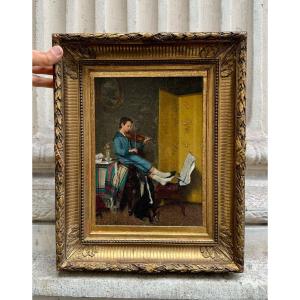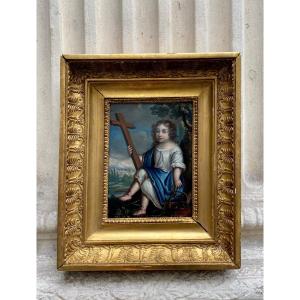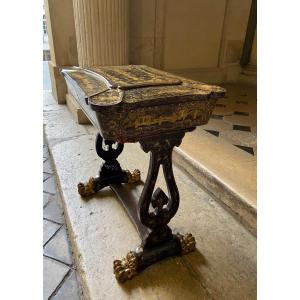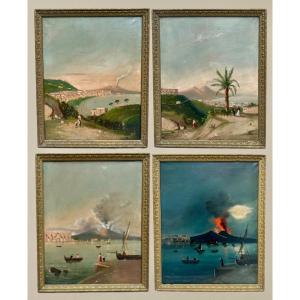Very interesting late 19th-century painting depicting a small troupe of street performers (saltimbanques) silently advancing through the snow along the Quai de la Mégisserie, facing the Île de la Cité in Paris.
In the background, one can distinguish the Sainte-Chapelle, the Conciergerie, and further to the left, the towers of Notre-Dame Cathedral.
During the Second Empire, the transformation of Paris under Baron Haussmann forced these performers, who used to entertain crowds on the Grands Boulevards, to leave their traditional venues. The famous Boulevard du Crime (formerly Boulevard du Temple), a hub of popular theatre, was progressively emptied of its street performers and its colorful, often marginal population. Marcel Carné’s film Les Enfants du Paradis gives us a remarkably accurate glimpse of what life must have been like around 1830 on that boulevard.
Deprived of their audience and their traditional territory, these artists were forced to scatter across Paris, seeking new stages on squares and along the quays. This painting, dated 1861, is a moving testimony to this situation. It portrays a troupe seemingly wandering, “from nowhere to nowhere,” deprived of its daily performance space.
From left to right, we see:
The leader of the troupe, wearing a checkered costume typical of the circus or street theatre world. He carries a ladder — essential for acrobatic acts — and a bass drum used to attract passersby and punctuate the rhythm of the show. Behind him, a child dressed in costume and wearing a paper crown, reminiscent of the comic or acrobatic roles often assigned to children. Further back, a young woman, ill-dressed for the season, balances a table on her head supporting a bundle and a musical instrument. A young girl clings to her, turning her head towards a young man — likely her brother — who carries a chair, presumably for balance tricks, and holds a pair of fencing foils. A trained dog accompanies the group, trudging sadly through the snow.
Far from depicting these artists during a performance, the painter chose to show them after a long, exhausting day, hinting at meager earnings and fatigue.
The soft glow of a gas lamp subtly lights the scene, heightening the contrast between the supposed cheerfulness of the saltimbanques and the harshness of their wandering existence.
This painting also captures a precise historical moment: the gradual disappearance of itinerant troupes from the center of Paris as a direct consequence of the urban upheaval orchestrated by the Second Empire, which profoundly altered the popular landscape of the city in the 1860s and 1870s.
The painting is signed lower left S. Detouche, most likely Simon Detouche, a painter associated with views of Paris in the 19th century.


















































 Le Magazine de PROANTIC
Le Magazine de PROANTIC TRÉSORS Magazine
TRÉSORS Magazine Rivista Artiquariato
Rivista Artiquariato